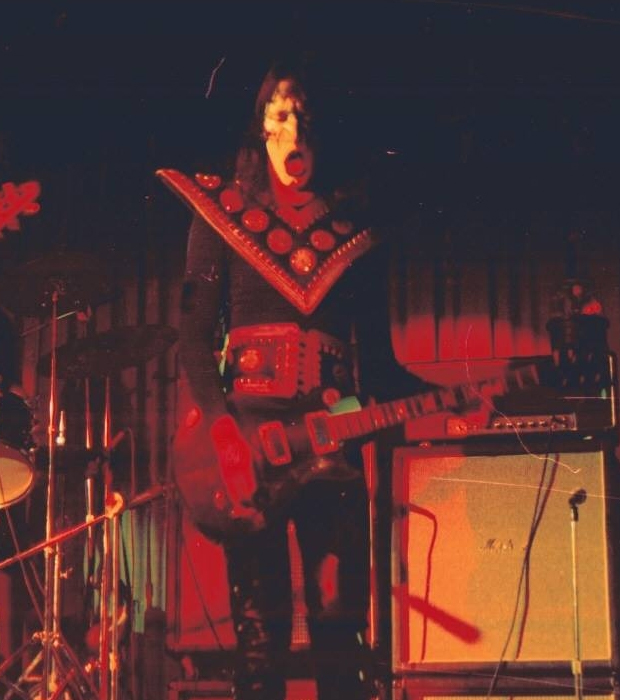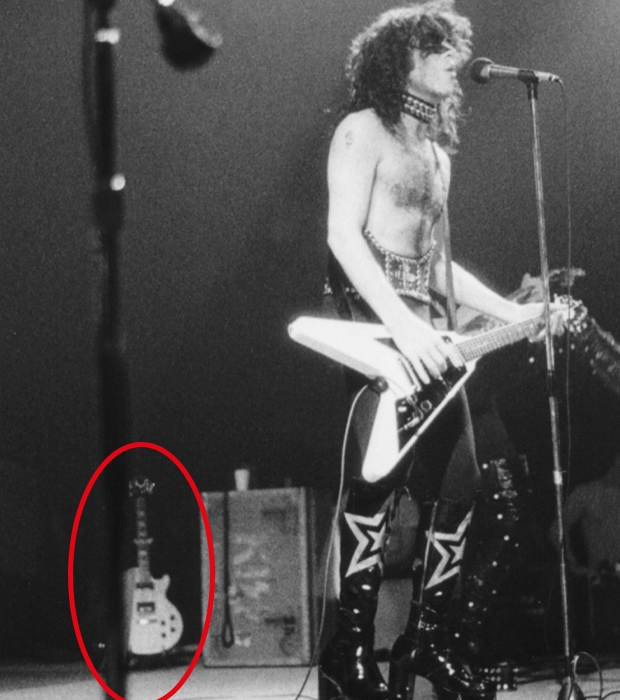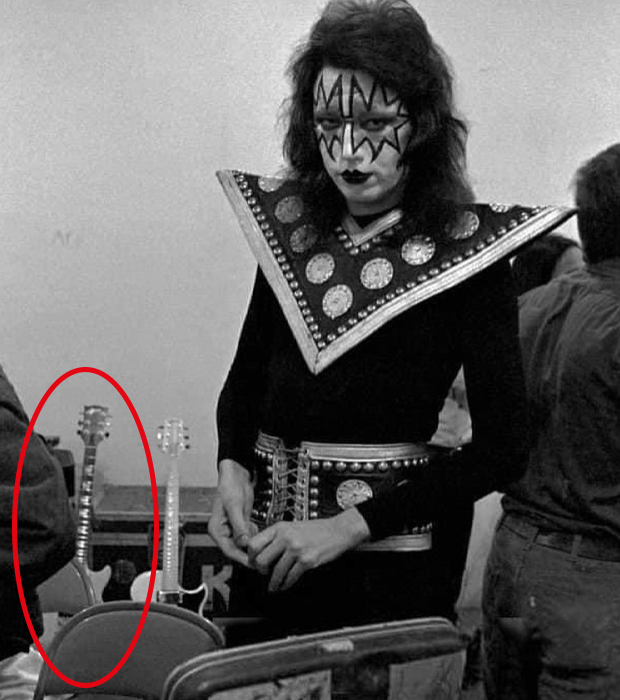1974
LES PAUL DELUXE (II)
When it comes to Ace's guitars there are few things more enigmatic and hard to figure out than this Les Paul Deluxe that appears all of a sudden in mid-October 1974. The things we can say for sure are that it is indeed a Les Paul Deluxe, the trapezoid inlays on the fretboard and the lack of an inlay on the headstock tells us that much, and we can say that it's been routed for full-size humbuckers. Lastly, whatever color paint job it had—and we generally call it black even though the headstock manages to look "blacker"—it had not been well applied. All the available photos from October 17 show a guitar that looks like it was finished by a 5-year old. We generally assume that the black-ish Les Paul with creme pickup rings that can be seen standing on Ace's side of the stage the next night in Hammond, Indiana is the same instrument.














